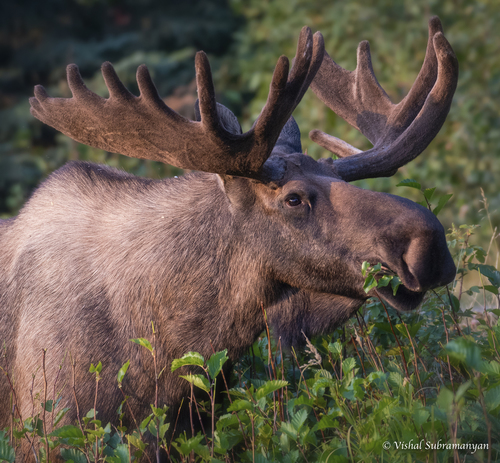
Moose
The towering moose (Alces alces) graces northern forests with its majestic antlers and solitary presence. Admired for its powerful, long-legged stride, this forest giant feeds serenely on lush aquatic plants, playing a crucial role in shaping and maintaining its wetland habitats.
15-20 years
Lifespan
270.0 - 720.0 kg
Weight
Brown, Grey, Tan
Color
20 mph
Top Speed
Least Concern
Conservation Status
Increasing
Population Trend
Distribution Range of the Moose
The Alces alces, commonly known as the moose, is native to the northern regions of North America, Europe, and Asia. In North America, they are found in Canada, Alaska, and parts of the northern United States. In Europe, they inhabit Scandinavia and parts of Eastern Europe including Russia. Their range extends through Northern Asia, mainly in Siberia.
Moose's Habitat
Environmental Conditions
Moose typically inhabit boreal and mixed deciduous forests. They are often found in areas with cold climates and seasonal snow cover, preferring regions near water sources such as lakes, rivers, and wetlands, which provide rich vegetation. The habitat also includes forested areas with abundant shrubs and trees that provide both food and shelter.
Ecological Niche
Moose are herbivores and play a crucial role in their ecosystem by influencing vegetation growth and structure. They are browsing animals, primarily feeding on leaves, twigs, and bark from trees and shrubs. They are also known to consume aquatic plants in summer months when they frequently visit water bodies. Their size and foraging habits affect the plant community dynamics, which in turn impacts other species within the ecosystem. In winter, their behavior and diet alter as they adapt to the harsh conditions with limited food availability.
Copyright @ Nature Style Limited. All Rights Reserved.
 English
English